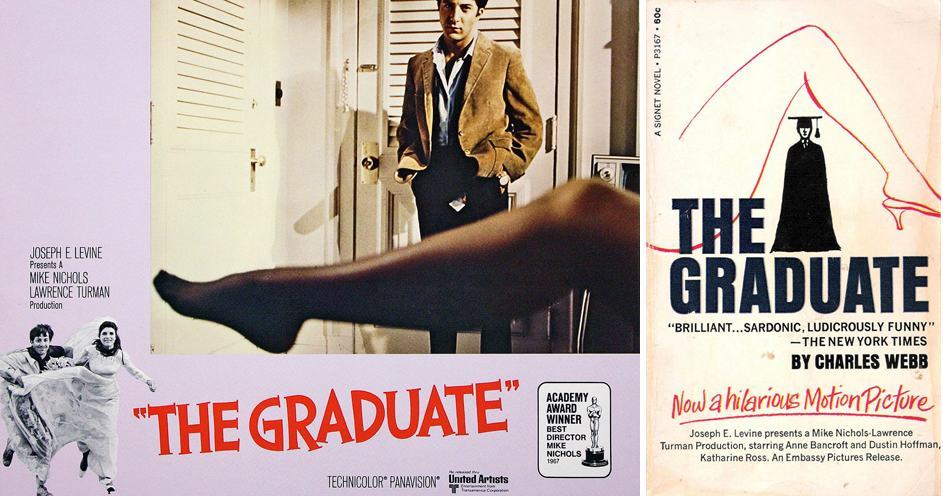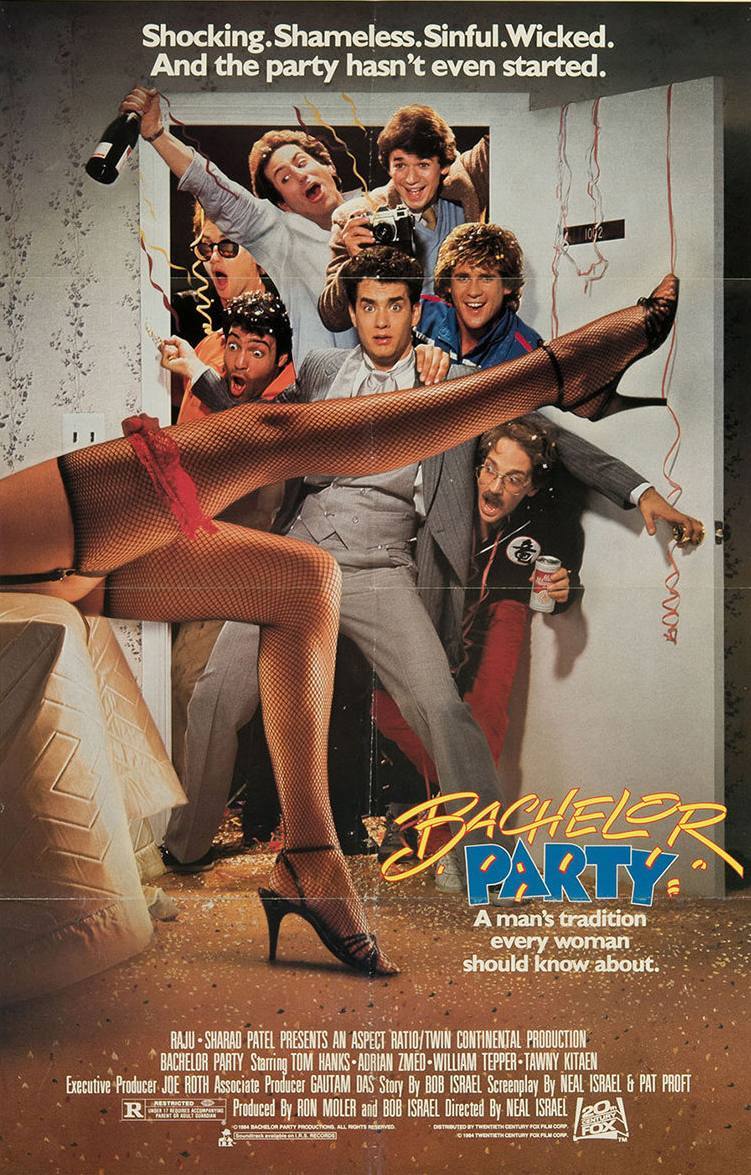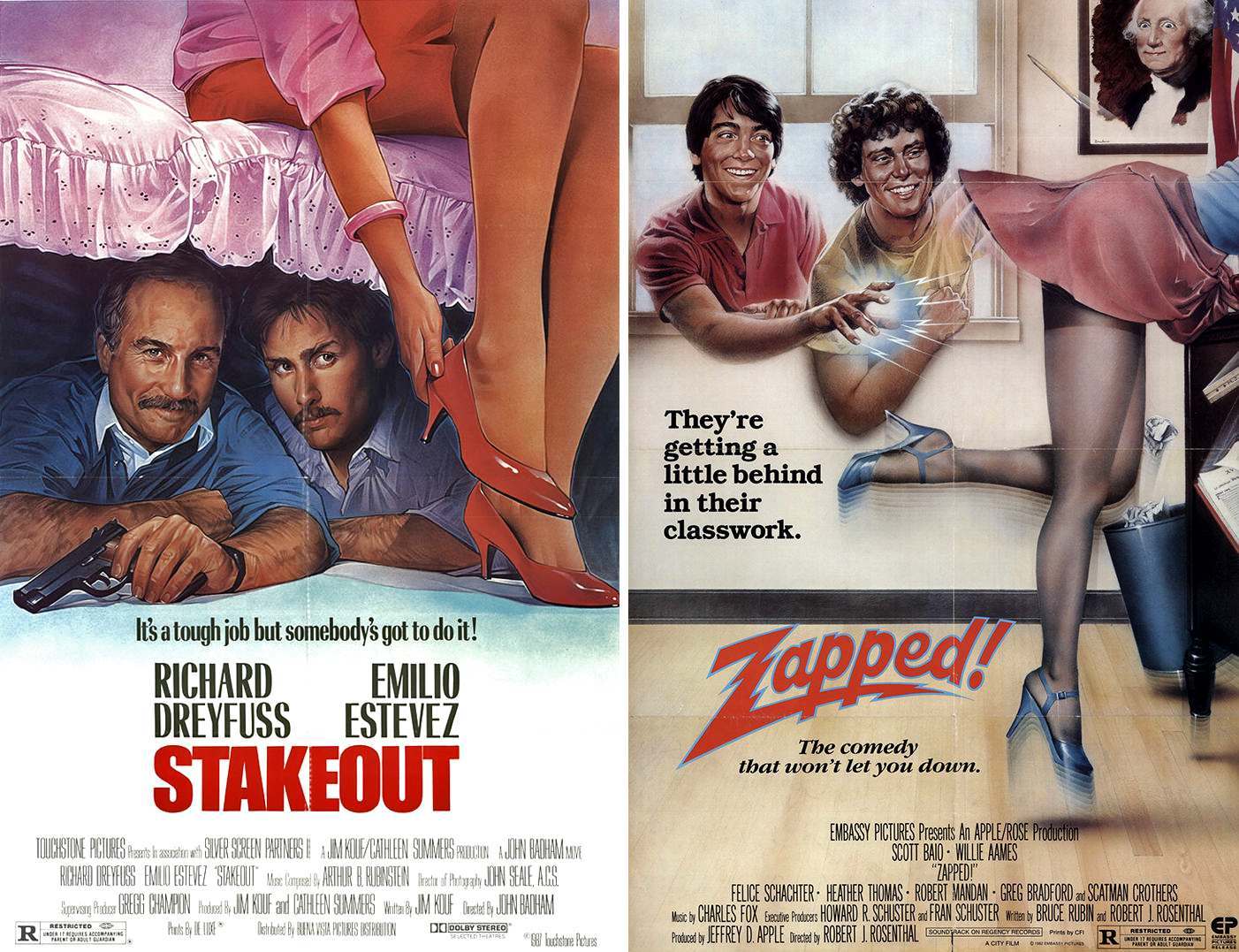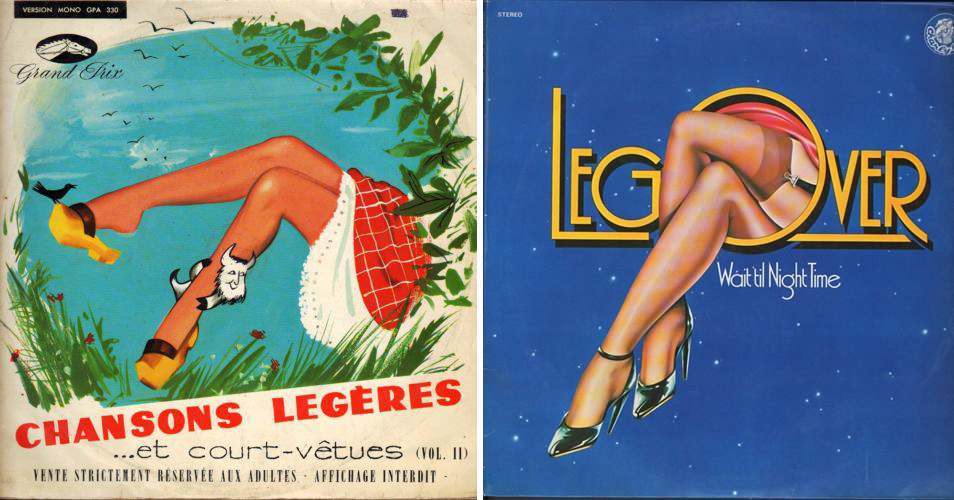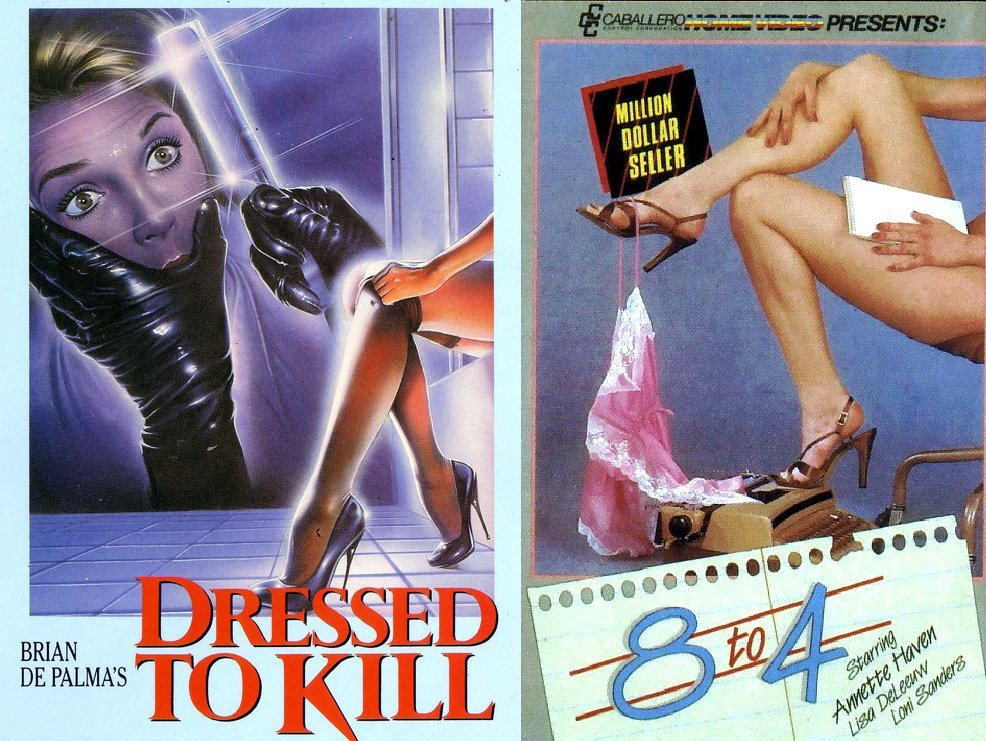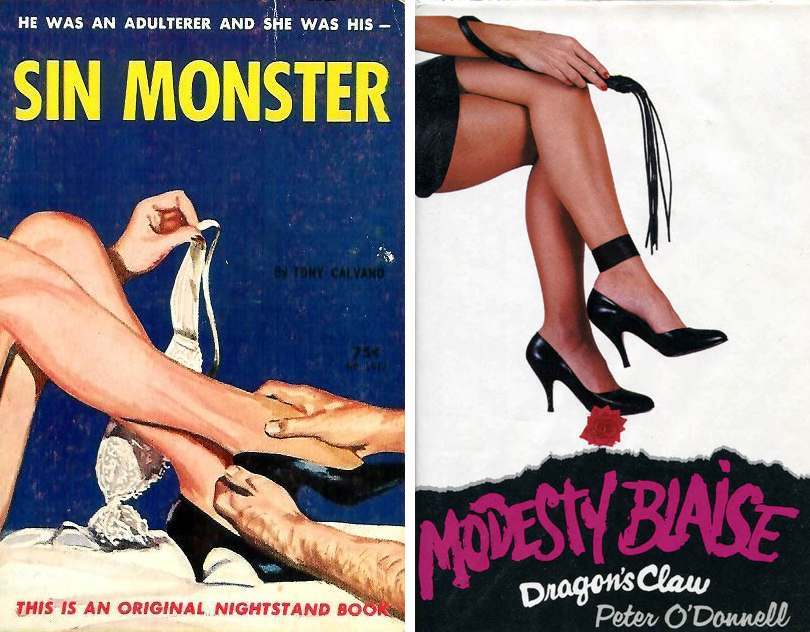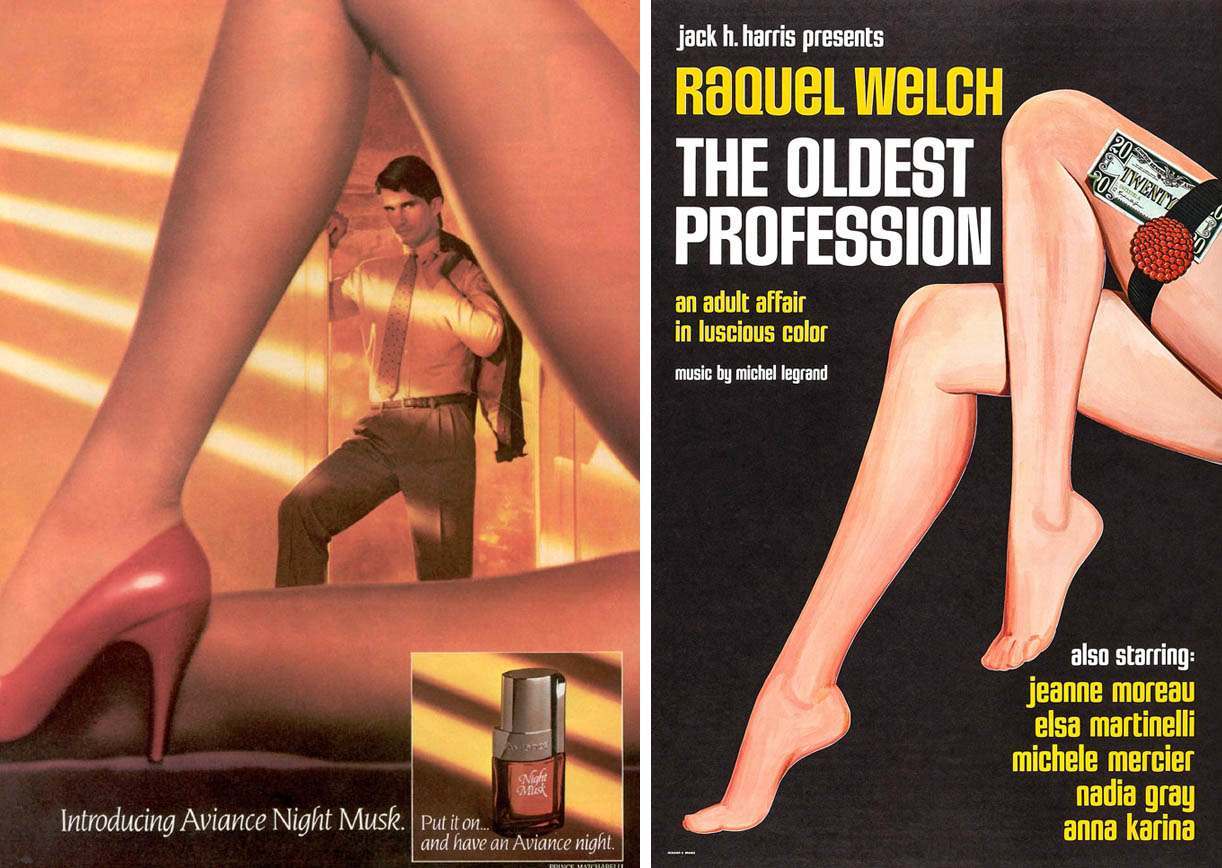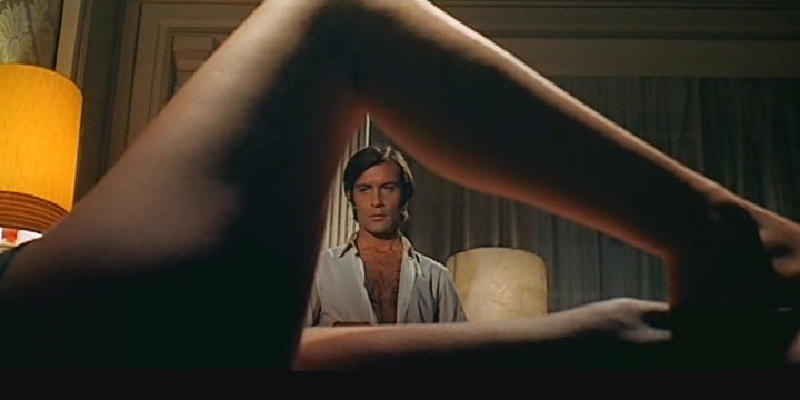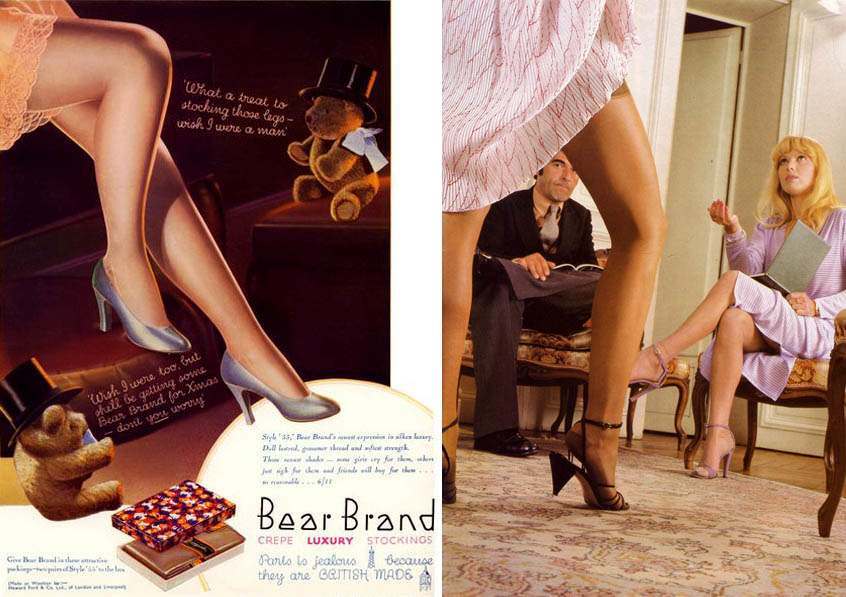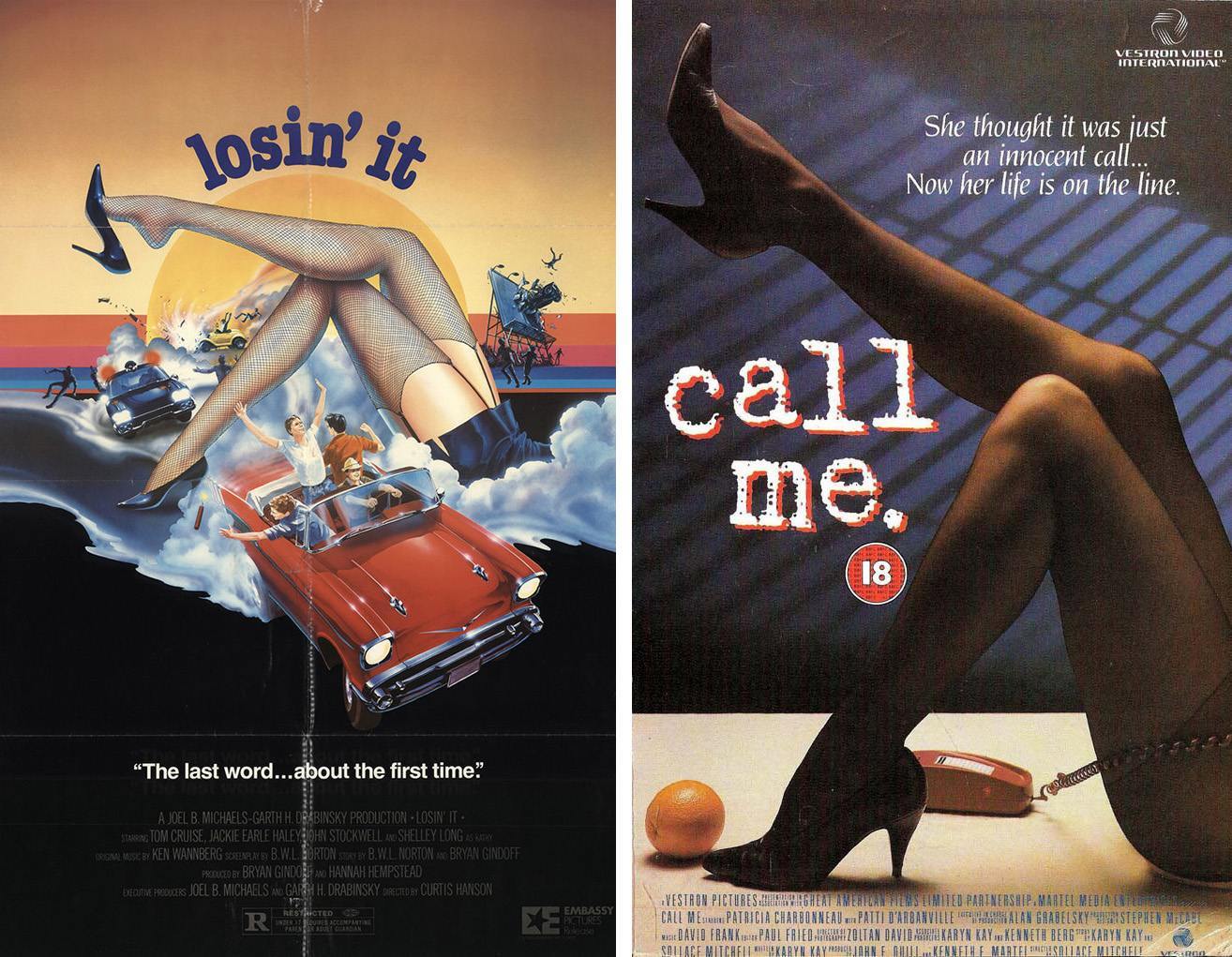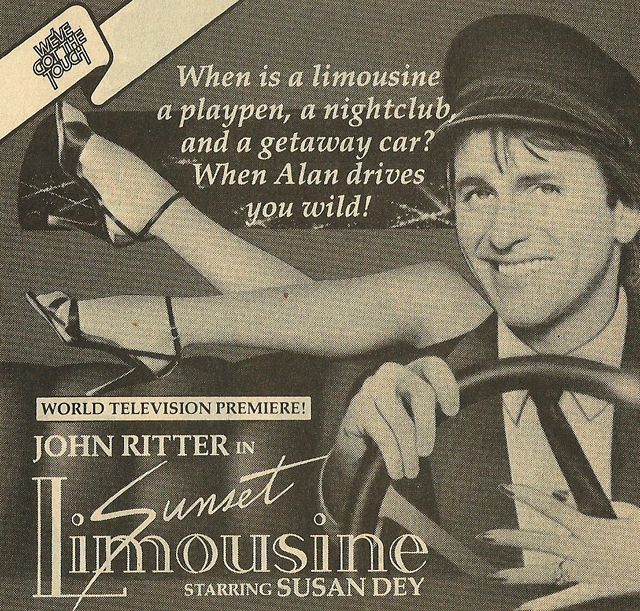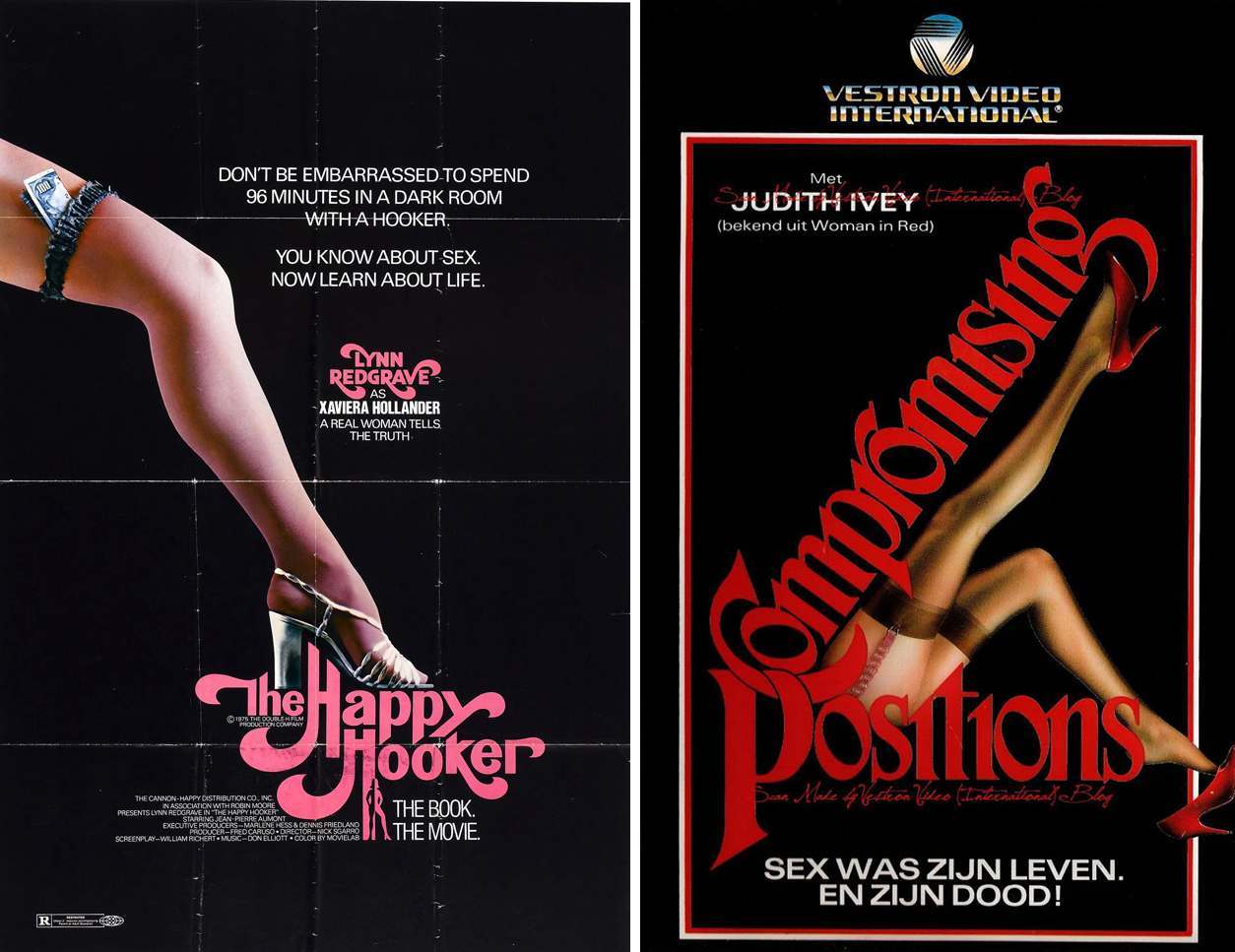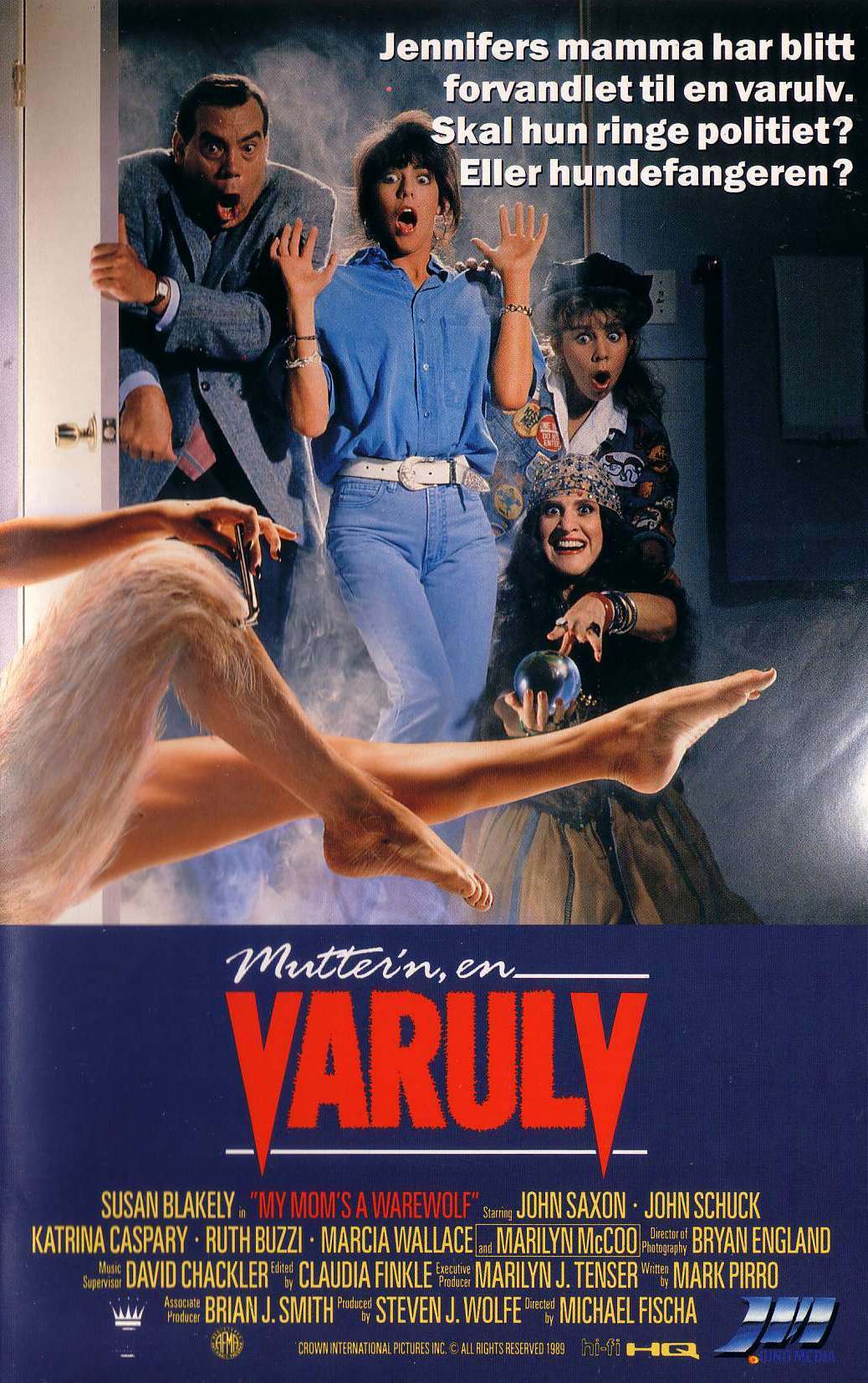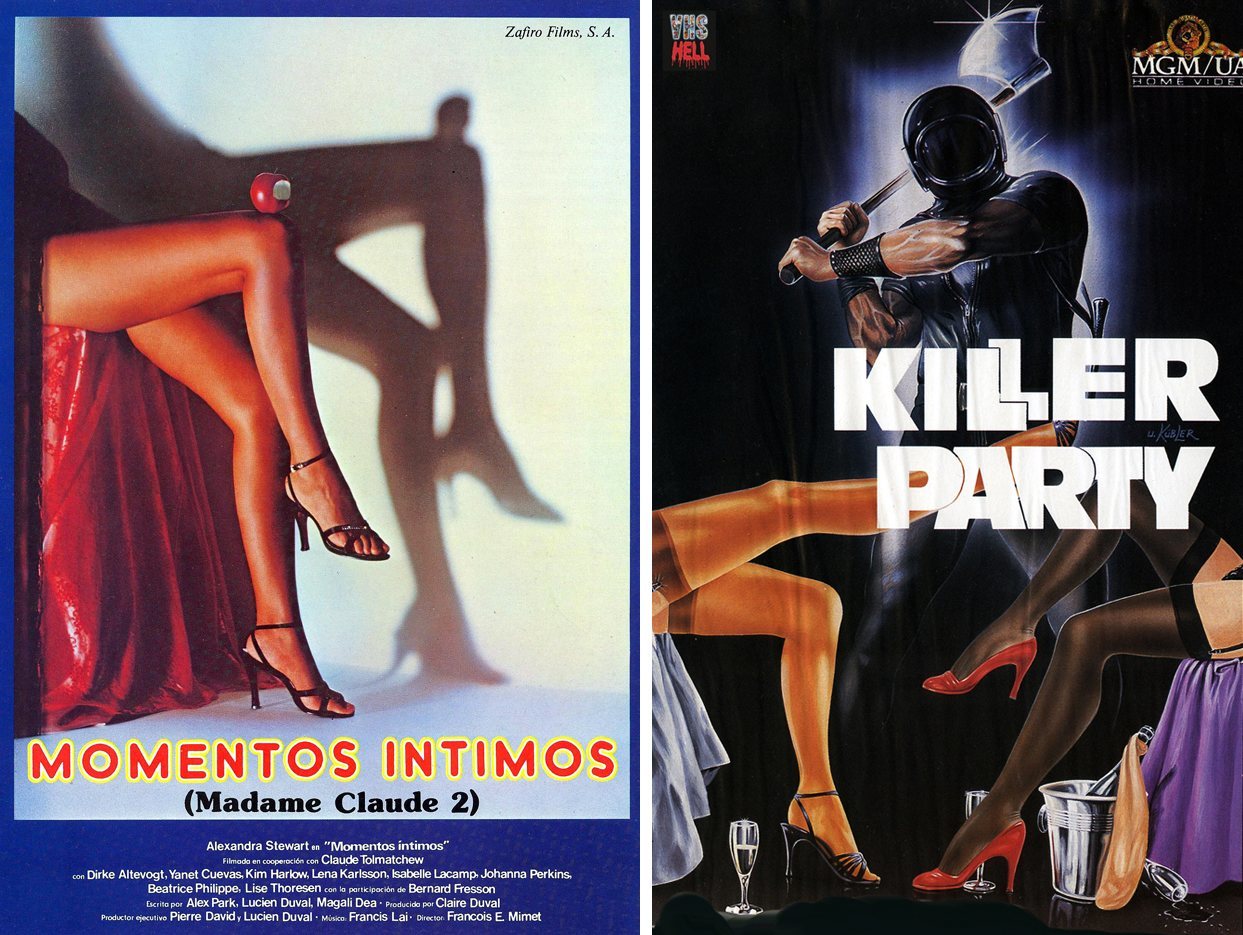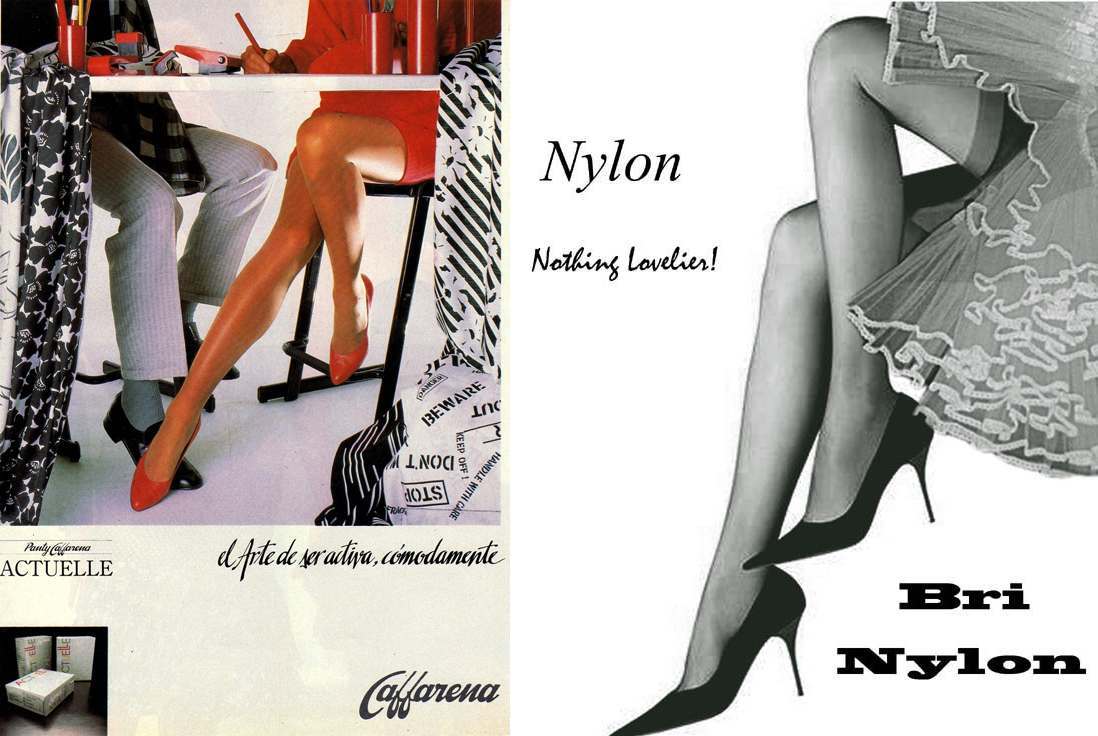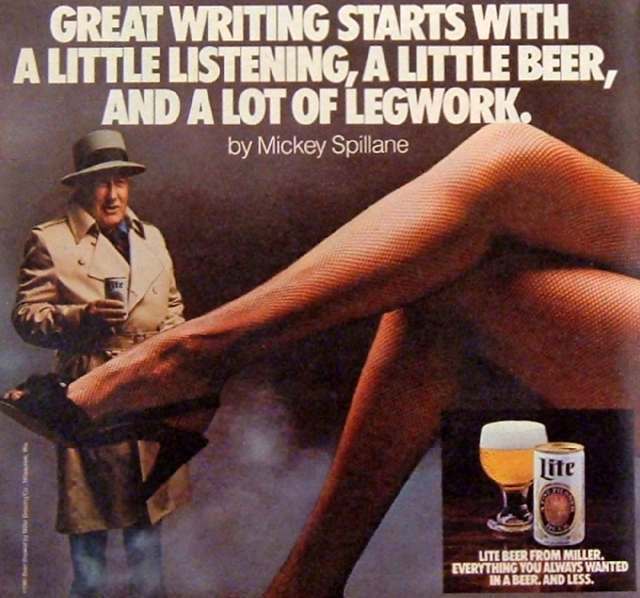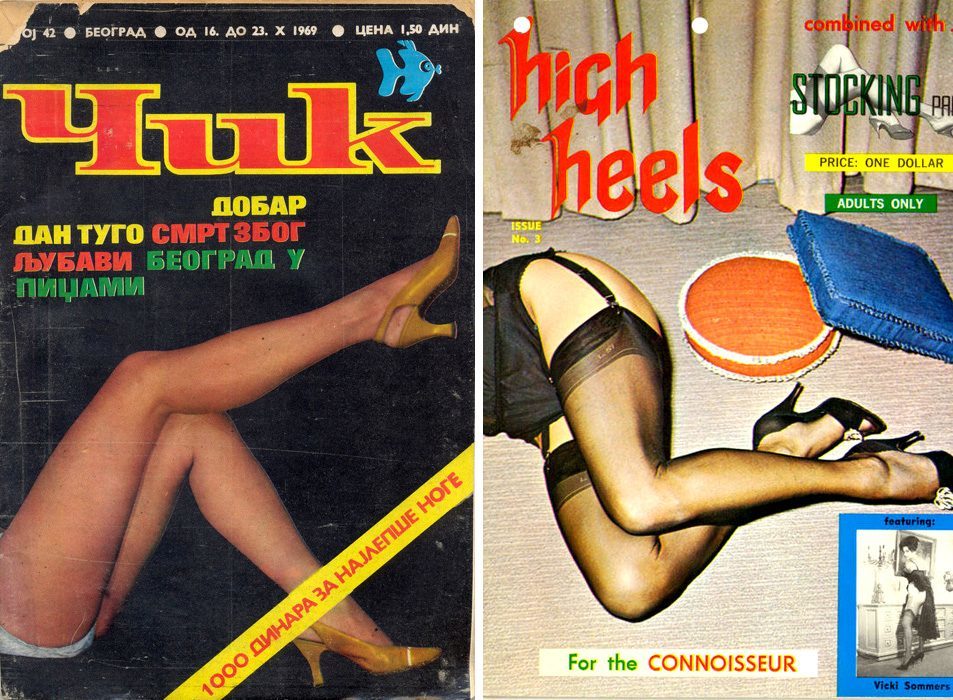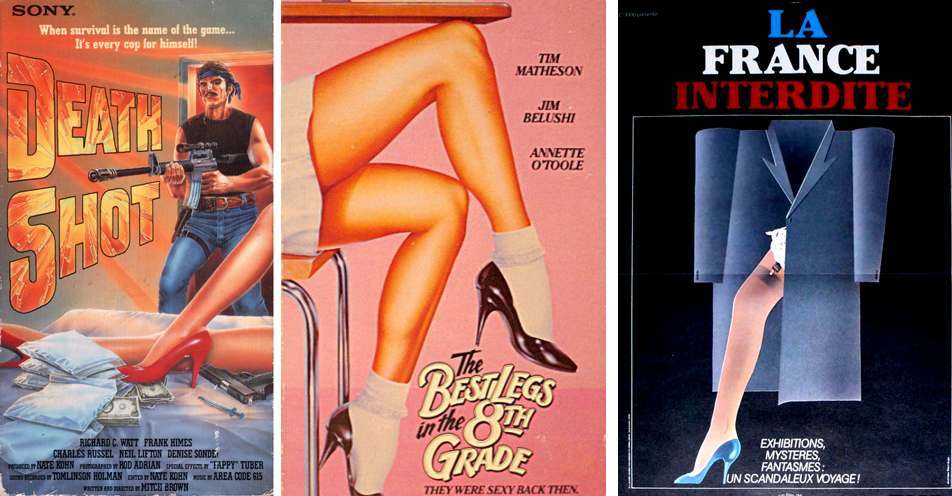We’ve talked before about themes that have been used over and over ad nauseum. Certain artful conceptions, for whatever reason, get recycled endlessly in vintage advertising, movie posters, paperback illustrations, album covers, etc. We’ve seen the “Conan Pose“, the “Women Running from Houses” theme, and, perhaps the worst offender: The A Frame. Today, we’re looking at yet another offender, the oft repeated “Mrs. Robinson Motif”. You know the design: a nice single or pair of feminine legs emerging from the margin.
Obviously, it earns its name from The Graduate – perhaps the best known example of the “Legs Only” trope in action. Mrs. Robinson’s leg became the symbol for the movie, and subsequently a pop culture icon. It’s a compelling image, and responsible for many imitators in years to come. However, as you’ll soon see, it by no means started in the 1960s – The Mrs. Robinson Motif is a time honored tradition.
Fast forward a couple decades after The Graduate, and the trope is still in full effect. There’s basically no difference between the two – even the male protagonists (Hoffman and Hanks) are both scared and conflicted.
Both of these Mrs. Robinson posters demonstrate a voyeur tendency inherent in the motif. The armchair sociologists out there will no doubt speculate as to the meaning of the Mrs. Robinson template in the first place. What’s it mean? What does it say about gender roles?
My thought is it simply appeals to the male’s libido. Men like legs (especially in decades past), and sex sells.
By far, the biggest perpetrators of the trope were movie posters; however, the Mrs. Robinson Motif can be found on album covers (above), paperbacks, adverts – basically any type of popular media.
From Hitchcockian thriller to 80s porno, the Mrs. Robinson Motif finds a home.
You’ll notice a predominance of black high heeled shoes. Again, we’ll leave the reasons for that to those sociology grad students using this for their thesis. Just don’t forget to cite Flashbak in your footnotes.
Of course, red high heels are pretty common in the Mrs. Robinson Motif as well. UGG boots and sandals, not so much.
You’ll notice the man in the Aviance Night Musk advert is framed by the Mrs. Robinson leg – a common formation of the trope…
… this framing device is very reminiscent of the aforementioned A-Frame “design virus”. Also note that the Mrs. Robinson imagery wasn’t just used for illustration it was often a part of the film itself (as above).
“What a treat to stocking those legs. Wish I were a man, ” says one the stuffed bears. More than a little bit disturbing are plush toys lustfully ogling human legs.
Okay, I can’t help it. The need to hypothesize about the nature of the Mrs. Robinson Motif is simply too great. Aside from the simple fact of “sex sells” as I mentioned before, with a “design virus” this far reaching, there must be some subconscious reason that compels its repetition.
Just as the A-Frame was a symbol of dominance – with the person forming the “A” being the dominant individual, and the person seen through the “A” being the submissive or victimized individual, the Mrs. Robinson thread is similar. The bodiless feminine legs represent S-E-X in the most threatening, dominant presentation imaginable. Thus, you have, in many of these examples, men cowering in fear. Of course, like any pop culture theory, there’s always an example to counter it.
But, whether it’s a symbol of dominance or not, I think it’s pretty safe to conclude the S-E-X implications are there. Thus, when John Ritter has a pair of Mrs. Robinson legs emerging from the back of his limousine, sexual shenanigans are definitely afoot.
Like I said – Mrs. Robinson = S-E-X
This foreign edition of My Mom’s a Werewolf” (1989) definitely muddies the sociological waters a bit. It’s simultaneously sexy and disgusting (and let’s not forget “lame”). Is this about S-E-X too?
This is where I nonchalantly get up from my sociology armchair and just enjoy the spectacle.
Killer Party (1986) earns a special place in the Mrs. Robinson Hall of Fame for the use of count’em – two sets of legs. Bravo, Killer Party.
I suppose hosiery adverts shouldn’t count as examples of the Mrs. Robinson as the format is somewhat necessary to display and sell the product.
Spillane was obviously a leg-man, always spouting off about a dame’s “stems” – “Gams that started some way above her head and finished three stories below.”
Well, we could go on all day and not run out of examples, but I think we’ve proven our point. The question is whether the Mrs. Robinson design virus persists to this day, or whether it finally was contained.
Would you like to support Flashbak?
Please consider making a donation to our site. We don't want to rely on ads to bring you the best of visual culture. You can also support us by signing up to our Mailing List. And you can also follow us on Facebook, Instagram and Twitter. For great art and culture delivered to your door, visit our shop.
